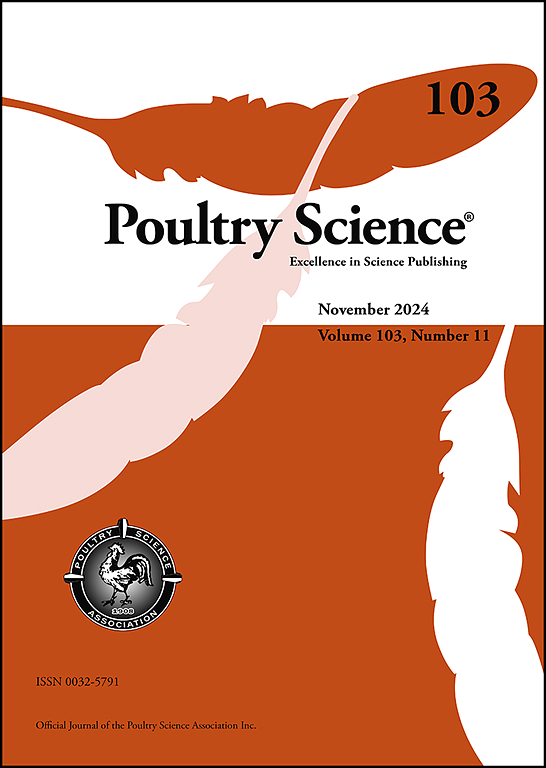miR-200b-3p affects the proliferation and differentiation of chicken preadipocytes by modulating SESN1 expression through competition with CircADGRF5
IF 3.8
1区 农林科学
Q1 AGRICULTURE, DAIRY & ANIMAL SCIENCE
引用次数: 0
Abstract
Excessive deposition of abdominal fat in chickens has a significant impact on the poultry industry, and there is increasing evidence that non-coding RNAs play a crucial role in fat development. In our previous RNA-seq study, miR-200b-3p was found to be differentially expressed during different developmental periods of fat in Gushi chickens. In this study, we report that miR-200b-3p can directly bind to the 3′UTR region of SESN1 to promote proliferation and inhibit differentiation of preadipocytes. Overexpression of SESN1 inhibits preadipocyte proliferation and promotes differentiation. In contrast, inhibition of SESN1 resulted in the opposite outcome. Interestingly, we also identified the circADGRF5/miR-200b-3p/SESN1 ceRNA network involved in the developmental process of preadipocytes. Furthermore, we validated a novel circRNA, circADGRF5, in this report and found that it regulates SESN1 expression through competitive binding with miR-200b-3p. In conclusion, these data suggest that miR-200b-3p directly targets SESN1 to regulate the proliferation and differentiation of preadipocytes, and circADGRF5 regulates SESN1 expression through competitive binding with miR-200b-3p.
求助全文
约1分钟内获得全文
求助全文
来源期刊

Poultry Science
农林科学-奶制品与动物科学
CiteScore
7.60
自引率
15.90%
发文量
0
审稿时长
94 days
期刊介绍:
First self-published in 1921, Poultry Science is an internationally renowned monthly journal, known as the authoritative source for a broad range of poultry information and high-caliber research. The journal plays a pivotal role in the dissemination of preeminent poultry-related knowledge across all disciplines. As of January 2020, Poultry Science will become an Open Access journal with no subscription charges, meaning authors who publish here can make their research immediately, permanently, and freely accessible worldwide while retaining copyright to their work. Papers submitted for publication after October 1, 2019 will be published as Open Access papers.
An international journal, Poultry Science publishes original papers, research notes, symposium papers, and reviews of basic science as applied to poultry. This authoritative source of poultry information is consistently ranked by ISI Impact Factor as one of the top 10 agriculture, dairy and animal science journals to deliver high-caliber research. Currently it is the highest-ranked (by Impact Factor and Eigenfactor) journal dedicated to publishing poultry research. Subject areas include breeding, genetics, education, production, management, environment, health, behavior, welfare, immunology, molecular biology, metabolism, nutrition, physiology, reproduction, processing, and products.
 求助内容:
求助内容: 应助结果提醒方式:
应助结果提醒方式:


